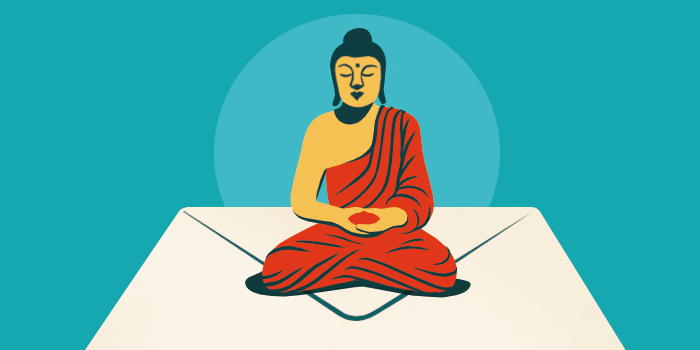Are all Buddhists vegetarians?

A Burmese laywoman offers rice to young Buddhist monks out on their daily alms round. | Pascal Mannaerts / Alamy Stock Photo
Everybody knows that Buddhists are vegetarians, right? Except that’s not entirely true. Even though the first precept of Buddhism is to refrain from taking life, while vegetarianism is encouraged in most schools of Buddhism, it’s not always a requirement.
The earliest scriptures we know tell us that the Buddha’s monastic disciples were not strict vegetarians. This was, no doubt, a matter of practicality. The early monks and nuns were allowed one meal a day, before noon, and this was of whatever food they were given as alms. In other words, they ate only what people could spare, and if what people could spare was meat, the disciples were required to eat it. However, the Buddha instructed monks and nuns not to eat animals slaughtered specifically for them and certain kinds of meat―bear, dog, elephant, horse, leopard, snake, and tiger. These rules only applied to monastics; laypeople likely ate meat out of practicality.
As Buddhism spread into China, Japan, and elsewhere, monks and nuns became less dependent on begging for food. Monasteries grew or purchased food, and since purchasing meat for many people required the slaughtering of animals, vegetarian meals became the norm. Laypeople were not required to eat a vegetarian diet, but many chose to do so. Several Mahayana sutras written early in the 1st millennium CE emphasize vegetarianism. The Lankavatara Sutra, for example, calls eating meat “the root of great suffering.”
In Tibet, with its limited arable land and challenging climate, a year-round vegetarian diet was not always possible, and Tibetan medicine suggested that eating meat had a beneficial and life-prolonging effect on the body. Even so, over the centuries a small number of Tibetan lamas avoided meat and encouraged their students to avoid it also.
Today, it’s generally the case that vegetarianism is considered a personal choice in Theravada and Tibetan Buddhism: most eat meat, and others are vegetarian, pescatarian, or vegan. Vegetarianism is more common in Mahayana schools, and particularly in the Chinese, Koreaean, and Vietnamese traditions, and in the West.

Tricycle is more than a magazine
Gain access to the best in sprititual film, our growing collection of e-books, and monthly talks, plus our 25-year archive
Subscribe now